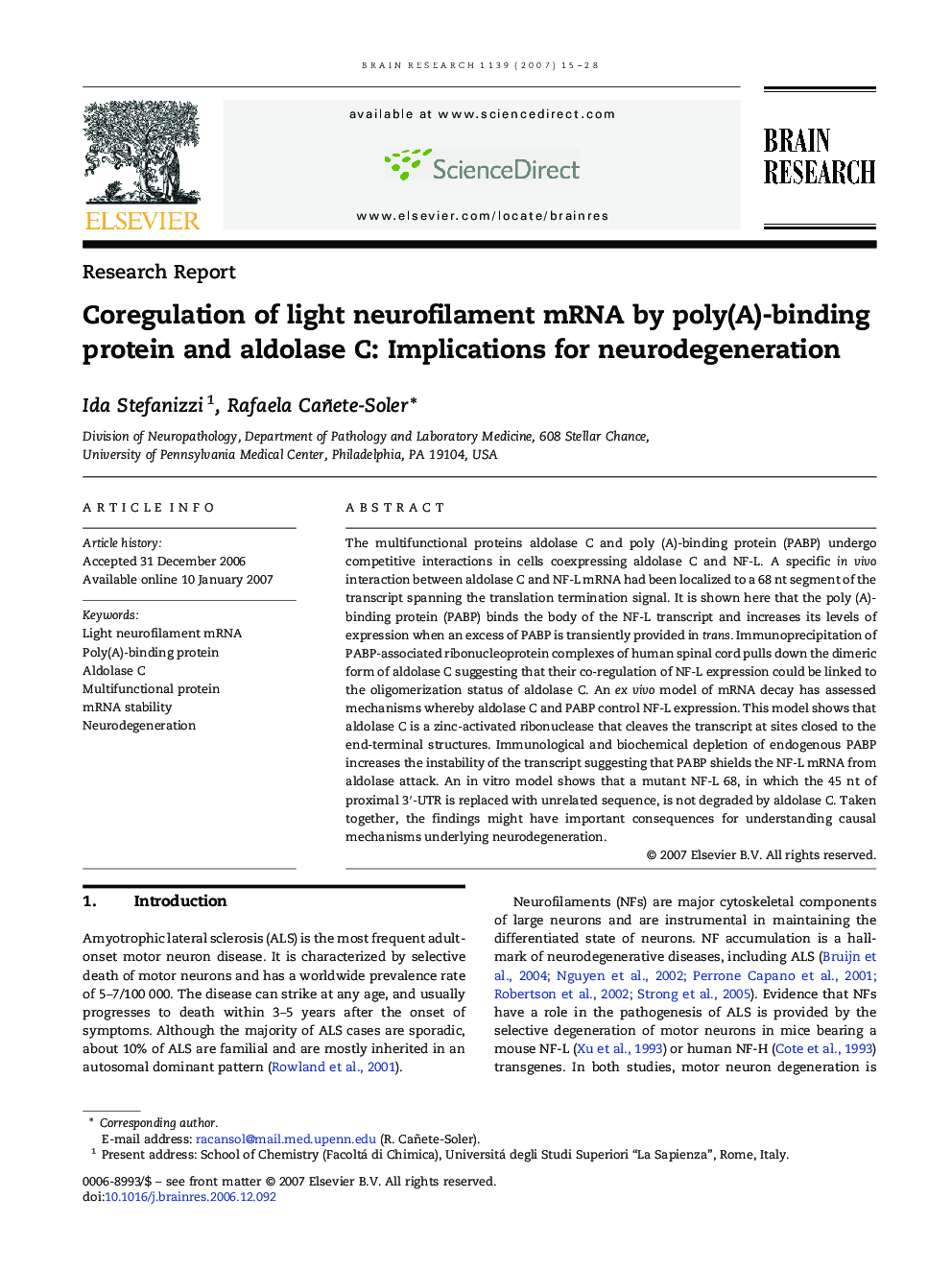| Article ID | Journal | Published Year | Pages | File Type |
|---|---|---|---|---|
| 4331468 | Brain Research | 2007 | 14 Pages |
Abstract
The multifunctional proteins aldolase C and poly (A)-binding protein (PABP) undergo competitive interactions in cells coexpressing aldolase C and NF-L. A specific in vivo interaction between aldolase C and NF-L mRNA had been localized to a 68Â nt segment of the transcript spanning the translation termination signal. It is shown here that the poly (A)-binding protein (PABP) binds the body of the NF-L transcript and increases its levels of expression when an excess of PABP is transiently provided in trans. Immunoprecipitation of PABP-associated ribonucleoprotein complexes of human spinal cord pulls down the dimeric form of aldolase C suggesting that their co-regulation of NF-L expression could be linked to the oligomerization status of aldolase C. An ex vivo model of mRNA decay has assessed mechanisms whereby aldolase C and PABP control NF-L expression. This model shows that aldolase C is a zinc-activated ribonuclease that cleaves the transcript at sites closed to the end-terminal structures. Immunological and biochemical depletion of endogenous PABP increases the instability of the transcript suggesting that PABP shields the NF-L mRNA from aldolase attack. An in vitro model shows that a mutant NF-L 68, in which the 45Â nt of proximal 3â²-UTR is replaced with unrelated sequence, is not degraded by aldolase C. Taken together, the findings might have important consequences for understanding causal mechanisms underlying neurodegeneration.
Related Topics
Life Sciences
Neuroscience
Neuroscience (General)
Authors
Ida Stefanizzi, Rafaela Cañete-Soler,
